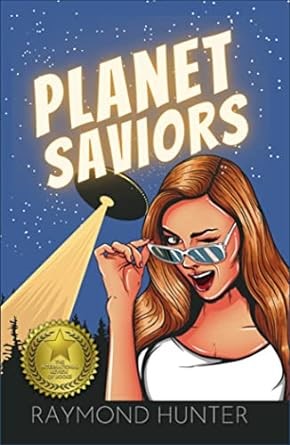As writers, we understand that crafting a compelling conflict is the heartbeat of any engaging narrative. Today, we delve into the intricacies of weaving conflict ideas for fantasy sci-fi worlds that revolve around the timeless themes of love and betrayal. In the fantastical universe, where realms are born from the imagination, these emotional dynamics can elevate a story from mere fantasy to a masterpiece that resonates with readers on a profound level.
Why Focus on Love and Betrayal?
Fantasy sci-fi worlds may be filled with fantastical creatures and sci-fi realms, but at their core, they are a reflection of the human experience. Love and betrayal are universal emotions that bridge the gap between the real and the imaginary. They create connections between readers and characters, fostering an emotional investment that transcends the boundaries of the fantastical. By focusing on love and betrayal, writers can tap into these universal emotions, creating narratives that entertain and resonate on a deeper emotional level.
Understanding the Power of Relationships through “Planet Saviors”
At the heart of any great fantasy tale lies a tapestry of relationships that bind characters together. When thinking of compelling conflict ideas for fantasy and sci-fi writing, investing time in developing characters with distinct personalities, motivations, and flaws is essential. Readers should feel a connection with these characters, caring about their journey and the relationships they form.
If you want a great example in today’s literature, “Planet Saviors” by Raymond Hunter is an excellent start. Stella, the novel’s protagonist, is different from others, and that’s one of the reasons why John falls in love with her. But, when figuring out why his girlfriend is so eccentric, he couldn’t even imagine the possibility that perhaps his girlfriend is “other-worldly” in the literal sense.
Hunter has crafted a unique, genre-blending tale where Stella is adamant that the inhabitants of Earth have the special power of imagination that could save her planet’s people from extinction. However, falling in love with John wasn’t part of the plan. Where would this love between people of two different planets take them?

How to Craft Compelling Conflict Ideas for Fantasy Worlds in Sci-Fi
When crafting conflict ideas for fantasy narratives in sci-fi, make sure that you cover each of the given elements:
Building Blocks of Love:
Setting the foundation for love helps make conflict ideas for fantasy and sci-fi characters more compelling.
- Forbidden Love: Delve into the complexities of love by introducing societal or magical barriers that make a relationship taboo. Whether it’s a love affair between different species or individuals from warring factions, the forbidden nature of the love adds tension and urgency, leaving readers eagerly anticipating the resolution.
- Love Triangles: Infuse your narrative with the classic trope of love triangles. Introducing a third character creates a web of conflicting emotions, allowing readers to explore the dynamics of desire, jealousy, and heartache. The unpredictability of the resolution keeps the narrative engaging and emotionally charged.
- Sacrifice for Love: Test the strength of your characters’ love by placing them in situations that require sacrifice. This could involve personal desires, aspirations, or even facing mortal danger for the sake of the relationship. Such sacrifices deepen the emotional connection between characters and resonate with readers long after the story concludes.
Betrayal: The Twist in the Tale:
As love flourishes, betrayal becomes a powerful tool to inject conflict into your fantasy narrative.
- Misplaced Trust: Build a sense of camaraderie and trust between characters, only to shatter it with a shocking betrayal. This subversion of trust adds a layer of unpredictability, keeping readers on the edge of their seats and invested in the characters’ emotional journey.
- Twisted Alliances: Create seemingly unbreakable alliances between characters, only to reveal hidden motives that lead to betrayal. This can lead to unexpected shifts in power dynamics and alliances, introducing complexity and depth to the narrative.
- Internal Struggles: Explore the internal conflict within a character torn between loyalty and personal gain. The internal struggle becomes a driving force behind the betrayal, making it both heartbreaking and compelling for readers to witness.
Crafting Emotional Dynamics:
Don’t forget that regardless of your chosen conflict ideas for fantasy and sci-fi stories, how you narrate can make or break the plot.
- Show, Don’t Tell: Instead of explicitly stating the emotions, vividly describe the characters’ actions, expressions, and body language. Allow readers to feel the intensity of the emotions rather than merely reading about them. This immersive approach enhances the emotional impact of the narrative.
- Character Arcs: Characters should undergo significant emotional transformations throughout the story. Whether it’s a journey from innocence to experience or redemption after betrayal, well-developed character arcs contribute to the emotional resonance of the narrative.
- Pacing and Timing: Control the pacing of your story to maximize emotional impact. Slow down during crucial moments of love or betrayal, allowing readers to savor the emotions and connect with the characters on a deeper level. Then, pick up the pace to build tension and maintain the reader’s engagement.

Your Copy of “Planet Saviors” Awaits
As we conclude our journey into the realms of love and betrayal within fantasy, remember this: at the core of every captivating tale are the emotions that resonate with our own human experiences. By weaving authentic relationships, forbidden love, and unexpected betrayals into your fantastical worlds, you’re not just creating a story; you’re crafting an emotional rollercoaster that readers won’t want to disembark from. So, fellow storytellers, let your quills soar and your imagination run wild, for in the realm of fantasy, it’s the heartstrings you pluck that leave a lasting melody. Happy writing!
Want more conflict ideas for fantasy sci-fi stories? Raymond Hunter’s “Plant Saviors” is the book for you! Grab your copy today and explore the love conflict between Stella and John.




